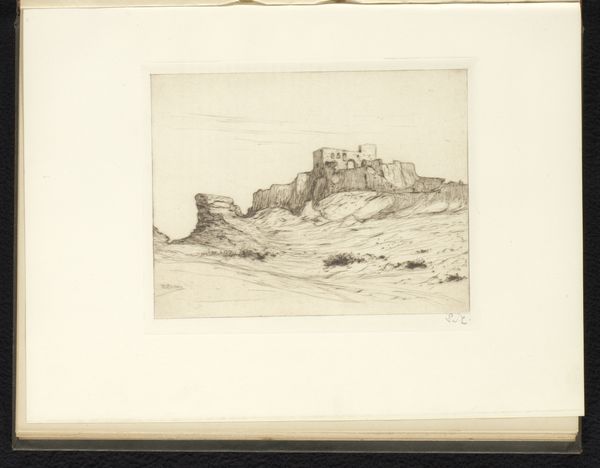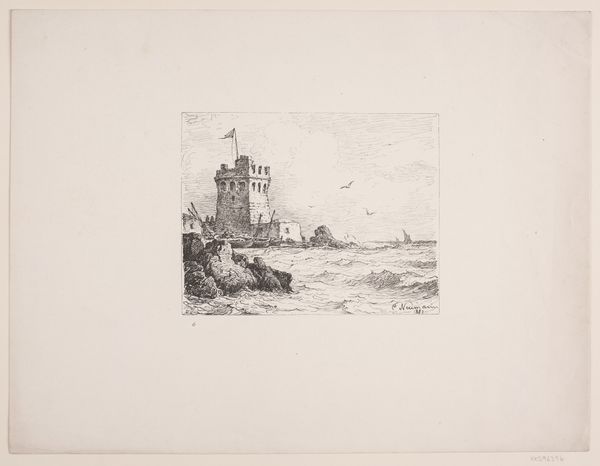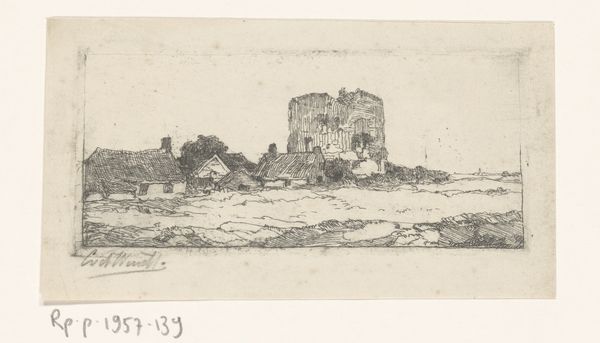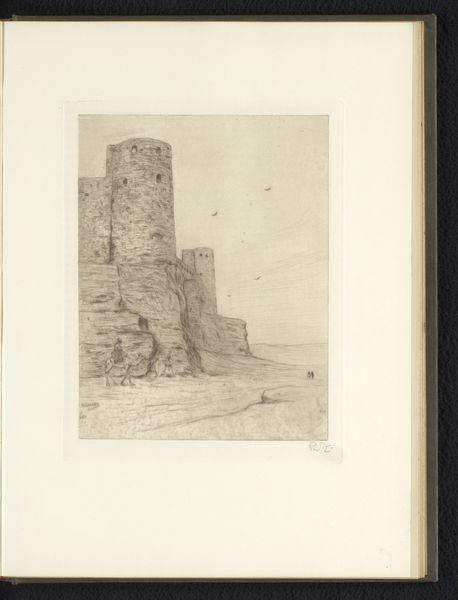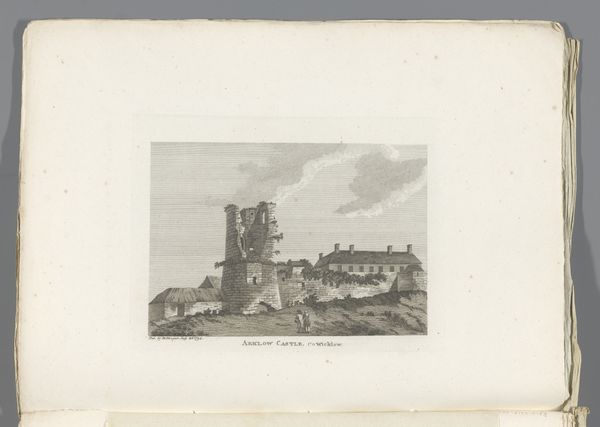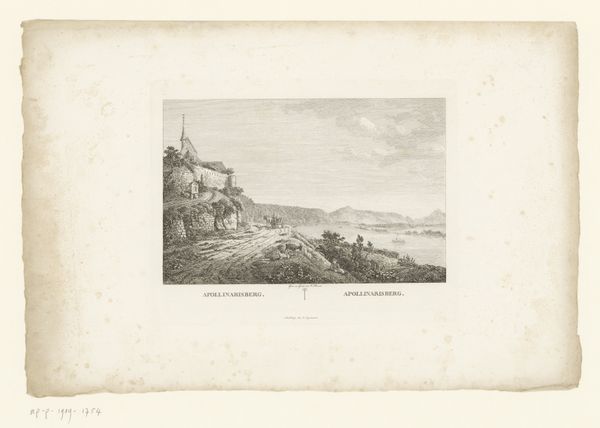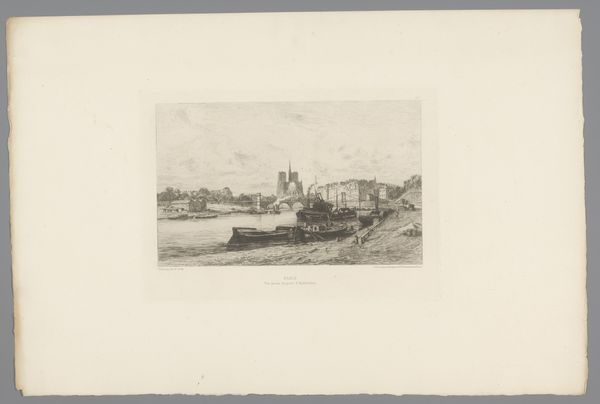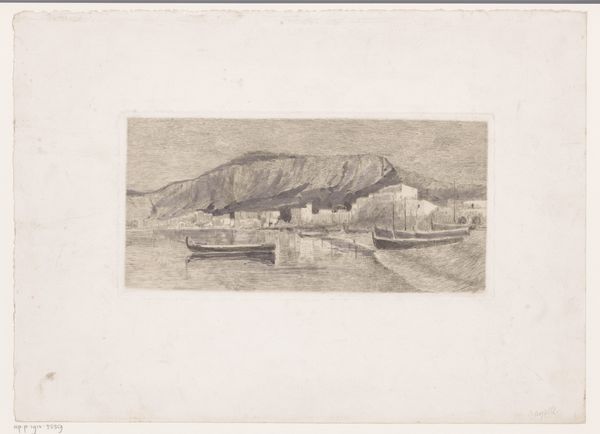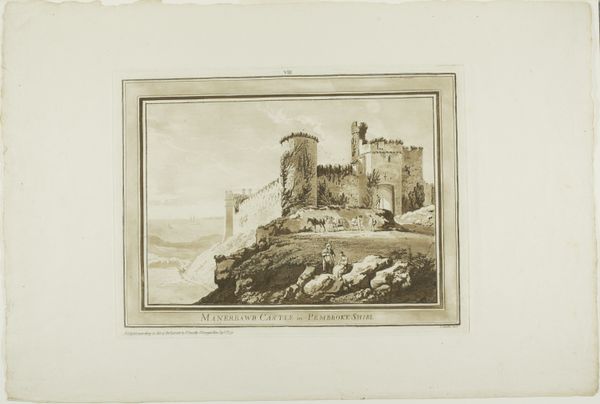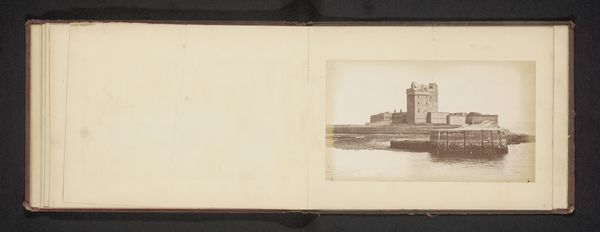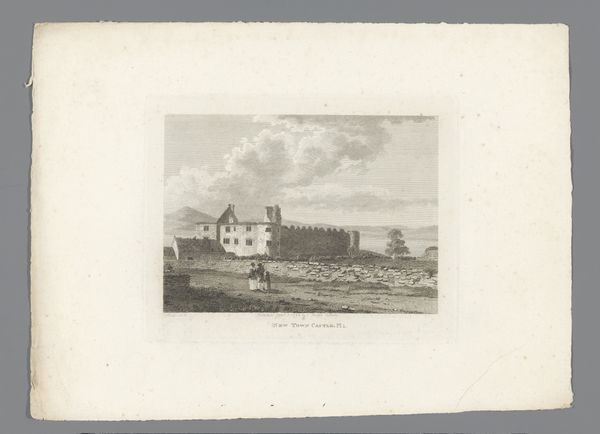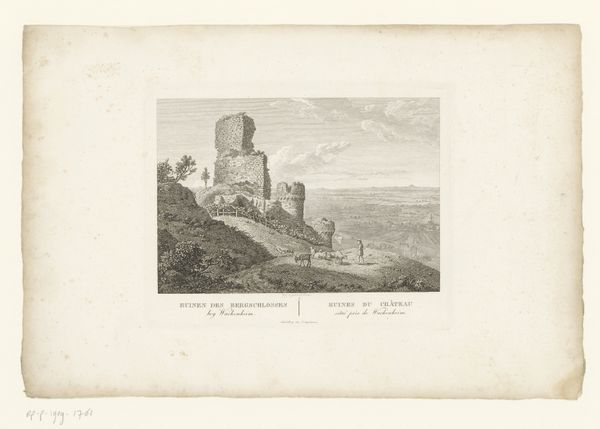
drawing, pencil
#
drawing
#
medieval
#
landscape
#
pencil
#
cityscape
Dimensions: height 142 mm, width 226 mm
Copyright: Rijks Museum: Open Domain
Editor: Here we have Philip Zilcken’s "Avignon. Tour Philippe le Bel," a pencil drawing from 1920. It's quite delicate; I’m drawn to how the tower seems to rise almost ethereally from the landscape. What do you see in this piece? Curator: Immediately, I’m struck by how the tower functions as more than just architecture; it's an embodiment of power, of a specific historical period, but also fragility. The artist's choice of pencil enhances this impression. Does the seeming simplicity of the landscape speak to a deeper psychological dimension, perhaps a reflection on memory and time? Editor: Memory and time, that’s interesting! I hadn't considered it that way. Curator: Look closer at the texture created by the pencil strokes, especially around the tower and the water. Does that visual weight lend itself to ideas related to human impact on the environment? In the presence of historical objects such as this medieval tower, consider their roles as witnesses to the passage of time. How does the rendering style—almost like a faded memory—impact our connection with the past? Editor: So, the delicate style almost becomes symbolic in itself, of memory and the past. I am starting to look beyond the aesthetic of it, and see how the symbolism creates the mood. Curator: Precisely! It makes me consider the ways in which we assign symbolic meaning to these historic spaces. Understanding why and how places accumulate value and sentiment can speak to their power within the public consciousness. Editor: That's given me a completely new way of thinking about how an artist represents a familiar monument. Thank you! Curator: A fresh perspective is always invaluable. It is also rewarding to have identified ways in which art informs culture and influences historical memory.
Comments
No comments
Be the first to comment and join the conversation on the ultimate creative platform.
